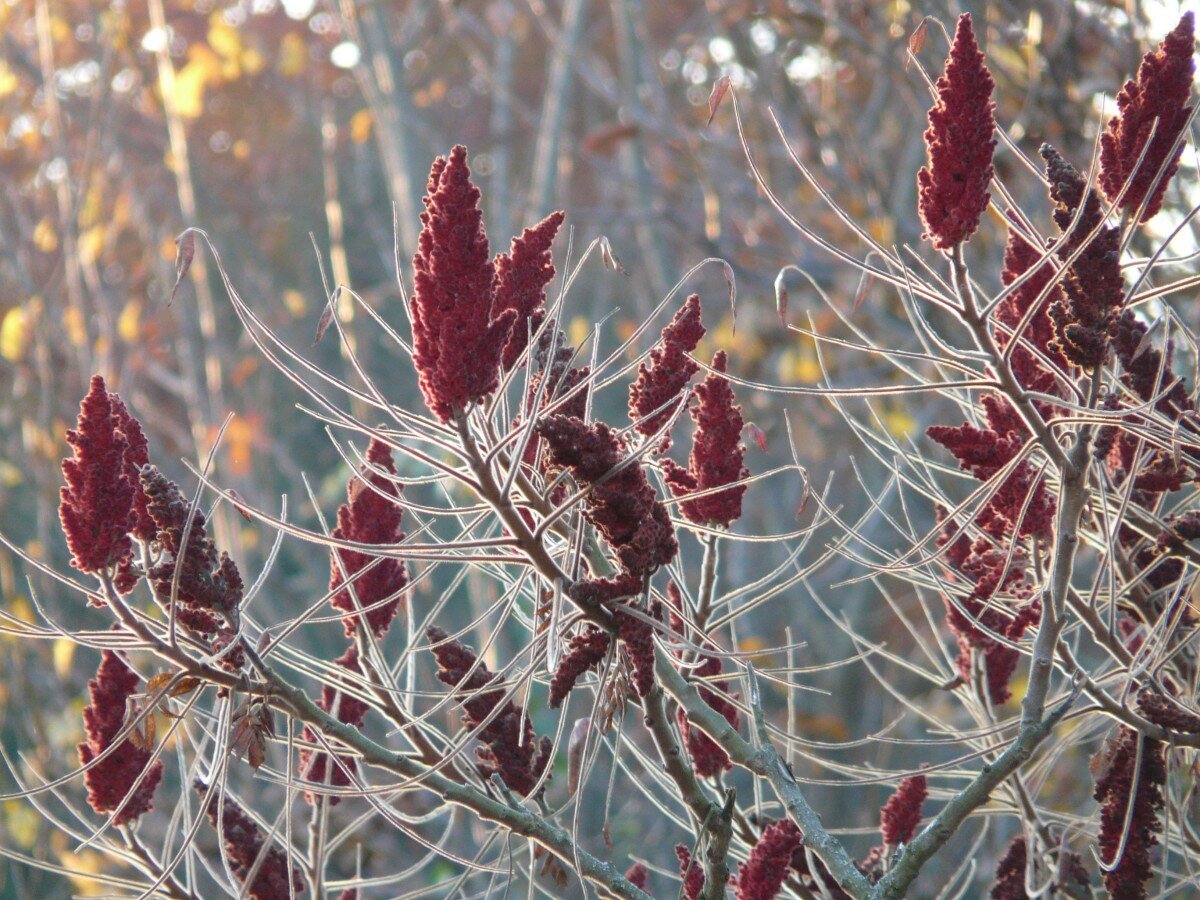I would like you to truly meet staghorn sumac (Rhus typhina). I say "truly meet" because I know many of you probably have some knowledge of this plant already. If your parents were as misinformed as mine growing up, you were probably raised to believe this plant will cause the same kind of contact dermatitis as poison sumac. Not the case! Though they are related, you probably have not come into contact with poison sumac (Toxicodendron vernix) unless you were hiking around in a bog or other high-quality wetland. Even then, poison sumac is not a common species. The point I am trying to make here is that staghorn sumac is not poisonous!
Staghorn sumac should be celebrated. Few trees can grow in such degraded soil like this tree can. In fact, it is most often encountered in roadside ditches and at the edges of farm fields. In the fall their canopy turns a brilliant shade of red. Seeing a large patch of sumac in full fall color rivals even maples for intensity. Because of this, staghorn sumac can make a beautiful landscape tree. It forms numerous clones from underground roots so that it is rare to see just one tree. Take a step back and look at a staghorn sumac population. They seem to always take on a dome-like shape. Their cloning habit is what gives sumac stand their dome-like appearance. Once a single individual becomes established, it sends out suckers in all directions. The farther out you go from the center of the dome, the younger the clones get.
Since all individuals that sprout from the original tree are clones, entire patches are usually either male or female. Female trees are those that produce the characteristic red, fuzzy seed spikes. The seeds are acrid, oily drupes that are low in fat. Because of this they do not readily spoil and thus stay on the tree in perfect condition all through winter and even into the next season. All of this adds up to sumac seeds being some of the most highly sought after late winter survival foods for birds and mammals. When everything else has been consumed or has spoiled, sumac drupes become very important meals. It is estimated that over 100 bird species will consume sumac fruits. Insects also relish this tree. Countless numbers of them feed on the leaves, flowers, and seeds.
Most importantly in this day and age, the dead stems and branches of this plant make perfect nesting sites for our native solitary bees. They have a soft pith that is easily hollowed out to make egg laying chambers. From carpenter bees to mud wasps, you can find dozens of species nesting in a sumac patch.
Finally, a delicious but tart tea can be made from steeping the seeds in cool water. The longer they steep the stronger the tea. In the heat of summer it is quite refreshing. However, you may want to filter it through a coffee filter before drinking to avoid ingesting the multitudes of larvae that feed in and among them.
Listen to Episode 297 about sumacs and sumac relatives!
Further Reading: [1]
